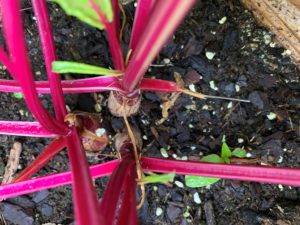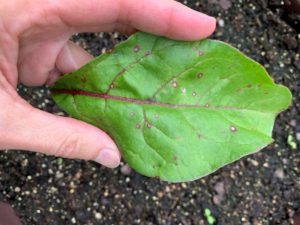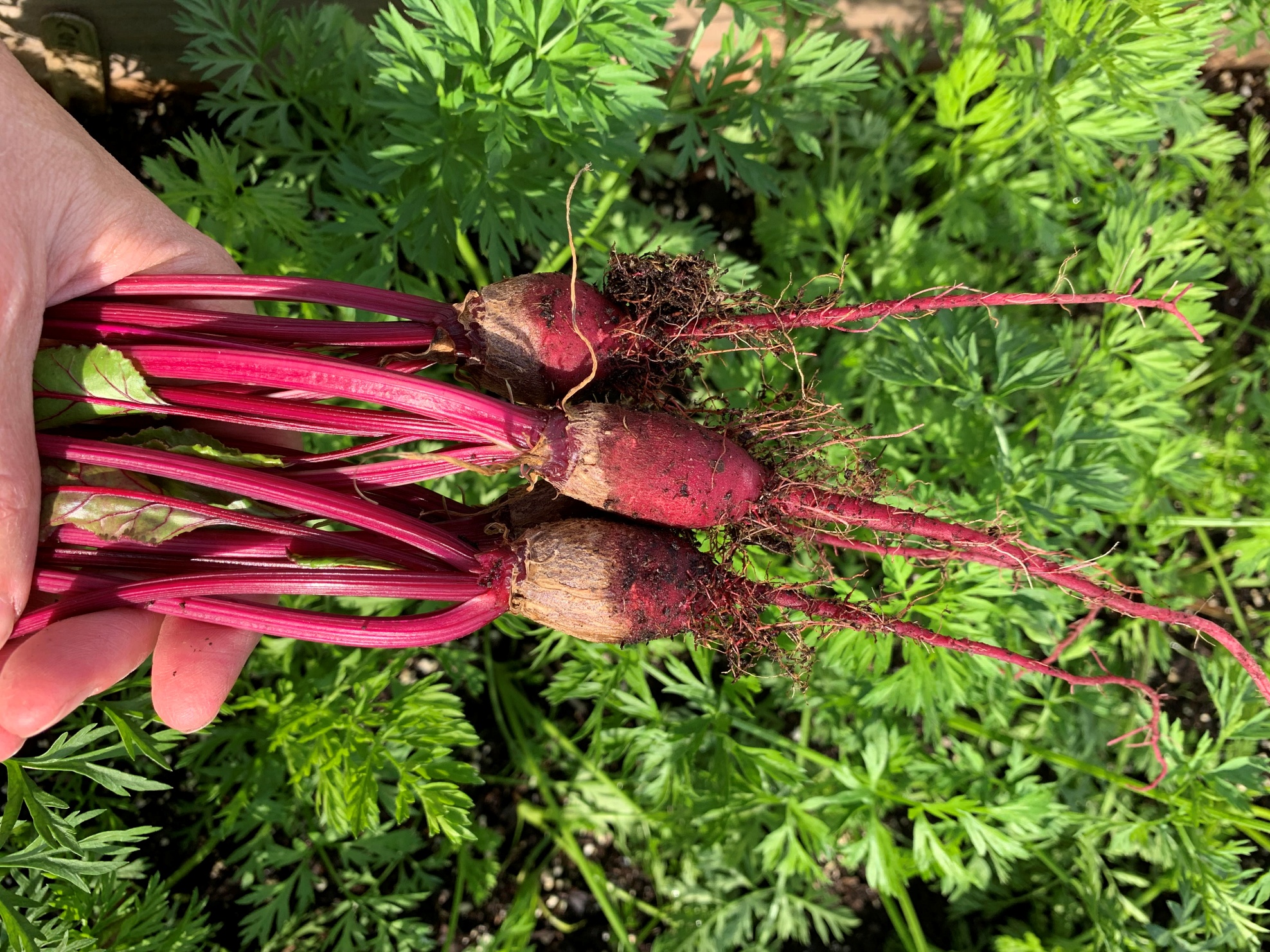Beets are an amazing root crop that you can easily grow in traditional beds or container gardens. But as with all vegetable crops, sometimes we don’t always get the harvest we had hoped for. Sometimes, instead of beautifully formed beets, we harvest ones that are small and not fully developed. If this has ever happened to you, or if you would like to prevent it from happening, here are ten reasons why your beets may be smaller than expected.
1. Soil Condition
Beets, like carrots, radishes, and other root crops, require loose soil to grow in. If the soil is compacted or if it contains rocks or other debris, it can hinder the roots’ development or cause them to be deformed. Before you plant seeds, make sure the soil you’re planting in is loose and free from obstacles. If necessary, add compost to help loosen the soil.
2. Soil Nutrients
All plants, including beets, require appropriate amounts of nitrogen to grow properly. But if your soil contains too much nitrogen, or if you fertilize your plants with a medium that has a high nitrogen content, the leaves will grow, but the beets will not. This is because nitrogen tells the plant to focus its energy on growing leaves, which is fine if you are growing lettuce, spinach, or other leafy greens. But for root crops, it is a problem because the “fruit” is the root. Instead of having healthy beets, you will end up with lush greens. To remedy high soil nitrogen, you can water the area thoroughly, causing the nitrogen to be washed deeper into the soil or out the container if that is the case. Or, you can add a layer chemical-free sawdust or woodchips on top, which will act to absorb the excess nitrogen.
This article contains affiliate links. If you make a purchase using one of these links, I will receive a very small commission at no additional cost to you, and it will help me maintain this website. Rest assured, I only recommend products I actually like!
Phosphorus is also an essential nutrient for plant development, in particular, for root growth and flower production. Thus, a phosphorus deficiency can spell trouble for beets. If you find that you have a phosphorus deficiency, you can add bone meal to the soil. This quick solution works because bone meal is made from ground animal bones, which contain phosphorus. Be sure to follow the manufacturer’s instructions because “more is not better.”
The only way to know for sure if you have a nitrogen or phosphorus issue is to perform a soil test. This is the soil test kit that I have. It is easy to use and provides you with results in just a few minutes.

3. Soil pH
Beets need a soil pH that is between 6.5 and 7.0 in order for roots to develop properly. If the pH falls below 6.5, phosphorus in the soil will become less available to the plant, and the roots will be affected. To make sure the soil you are using is right for growing beets, you will need to test the pH. The soil test kit that I mentioned above can test for pH in addition to nitrogen, phosphorus, and potassium (or potash). If the test results show that the soil is too acidic, you can add garden lime or wood ash. If it is too alkaline, you can add garden sulfur, which may take up to six months to correct the problem. For a quicker remedy, you can try adding freshly brewed organic coffee that has been diluted with an equal amount of water. Allow the mixture to cool before adding to the soil. This method works better for containers because the volume of soil is smaller. Just a reminder, if you choose to add lime or sulfur, be sure to follow the manufacturer’s directions!
4. Inadequate Sun Exposure
Beets require six or more hours of full sun. If they don’t receive adequate sunlight, the leaves may develop, but the roots will not. Be aware that when the seasons change, the amount of sunlight your garden beds or containers receive may change because the angle of the sun changes. Therefore, before planting, observe the pattern of the sun on your beds (or space where you will place containers) throughout the day so you will know where the best places to plant are located.
5. Not Enough Room
There are two schools of thought as to how to space beet plants. Conventional wisdom calls for planting beet seeds at least 2 to 3 inches apart and thinning seedlings to the same spacing. Failing to do so can result in under-developed beets as the roots must compete for space. However, others have had success planting beets without thinning the seedlings. The thinking is that since beet seeds are actually seed pods that contain more than one seed, they are supposed to be grown together. I have had mixed success using this method and need to experiment more before I draw any conclusions. You may want to experiment as well.

6. Too Much Water
Beets can be a little temperamental when it comes to watering. If the soil is too wet, it can hamper root development. Overwatering can also cause root rot and promote diseases like Cercospora leaf spot. Water the plant when the soil feels dry an inch below the surface. Like tomatoes, too much fluctuation in soil moisture can cause beets to crack and become woody. So it is best to be consistent in your watering.
7. Pests and Disease
When a plant is stressed, it will not grow as well because it is in survival mode. Pests, like aphids and flea beetles, can harm the leaves to the extent that it affects beet development. Similarly, diseases like Cercospora leaf spot can place stress on beet plants, which will, in turn, cause the beets to be smaller than they should be.

8. Improper temperature
Beets are a cold-weather crop that grows best in temperatures between 50°F to 65°F (10-18°C), but it can tolerate somewhat cooler or warmer conditions. If you try to grow them when it is too hot or too cold, however, they will not grow properly, and the beet will be undersized or become woody in texture and thus inedible. The obvious remedy to this problem is to plant them when the temperatures are ideal. You can learn more about when to plant beets in my article, How to Grow Glorious Beets!
9. Harvested Too Early
In general, beets take between 50 and 65 days to mature, depending on the variety. If you harvest them before their maturity date, they will, naturally, be undersized. This is not necessarily a bad thing since young beets are usually more tender and taste sweeter than fully grown beets. But if you are wondering why your beets are small, it could be because you harvested them too soon.
10. Wrong Variety
There are quite a number of beet varieties to choose from. Some grow larger bulbs than others. If you want to grow large beets, be sure to choose a variety that can meet your expectations and not ones that produce beets that max out at two to three inches.
You can read my article on How to Grow Glorious Beets to learn more about how to successfully grow this amazing root crop!
Thank you for reading this article! If you found it helpful, please consider sharing it with others on social media!

